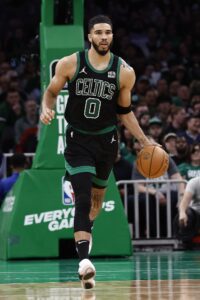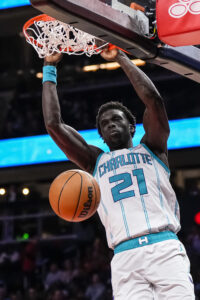Although a number of big-money free agent contracts were completed over the summer, several of the most lucrative deals signed by players so far in 2024/25 have been contract extensions. And many of those extensions have been maximum-salary deals.
 [RELATED: 2024/25 NBA Contract Extension Tracker]
[RELATED: 2024/25 NBA Contract Extension Tracker]
Because those extensions won’t go into effect until at least the 2025/26 season and the NBA won’t finalize the ’25/26 salary cap until next summer, we can only ballpark what many of year’s maximum-salary contracts will look like based on the league’s latest cap estimates.
The NBA’s most recent projection for ’25/26 called for a $154,647,000 cap, which is the number we’ll use to project next season’s maximum salaries. That would represent a 10% increase on this season’s cap, which is the maximum allowable increase for one year league year to the next.
Listed below are the early maximum-salary projections for 2025/26.
The first chart shows the maximum salaries for a player re-signing with his own team — a player’s previous club can offer five years instead of four, and 8% annual raises instead of 5% raises. The second chart shows the maximum salaries for a player signing with a new team.
A player’s maximum salary is generally determined by his years of NBA experience, so there’s a wide gap between potential earnings for younger and older players. Unless they qualify for a more lucrative extension by meeting certain performance criteria, players with no more than six years of NBA experience are limited to a starting salary worth up to 25% of the cap. For players with seven to nine years of experience, that number is 30%. For players with 10 or more years of experience, it’s 35%.
Here are the the early max-salary projections for 2025/26:
A player re-signing with his own team (8% annual raises, up to five years):
| Year |
6 years or less |
7-9 years |
10+ years |
| 2025/26 |
$38,661,750 |
$46,394,100 |
$54,126,450 |
| 2026/27 |
$41,754,690 |
$50,105,628 |
$58,456,566 |
| 2027/28 |
$44,847,630 |
$53,817,156 |
$62,786,682 |
| 2028/29 |
$47,940,570 |
$57,528,684 |
$67,116,798 |
| 2029/30 |
$51,033,510 |
$61,240,212 |
$71,446,914 |
| Total |
$224,238,150 |
$269,085,780 |
$313,933,410 |
The “6 years or less” column here is what the new extensions for Scottie Barnes, Cade Cunningham, Evan Mobley, and Franz Wagner will look like if none of them make an All-NBA team in 2025. All four players have Rose Rule language in their contracts, however, and could move up to the 30% max column (“7-9 years”) if certain performance criteria are met.
The 30% max column will also apply to players who reach the free agent market next summer with between seven and nine years of NBA experience under their belts. That would be Brandon Ingram‘s maximum contract with his current team, for instance.
The third column (35%) will apply to the super-max extension signed by Celtics star Jayson Tatum or to a player with 10+ years of NBA service who reaches free agency next summer, such as Mavericks star Kyrie Irving.
A player signing with a new team (5% annual raises, up to four years):
| Year |
6 years or less |
7-9 years |
10+ years |
| 2025/26 |
$38,661,750 |
$46,394,100 |
$54,126,450 |
| 2026/27 |
$40,594,838 |
$48,713,805 |
$56,832,773 |
| 2027/28 |
$42,527,925 |
$51,033,510 |
$59,539,095 |
| 2028/29 |
$44,461,013 |
$53,353,215 |
$62,245,418 |
| Total |
$166,245,525 |
$199,494,630 |
$232,743,735 |
If a player changes teams as a free agent, he doesn’t have access to a fifth year or 8% raises. So if someone like Alperen Sengun were to sign an offer sheet with a new team next summer, his maximum contract would be a four-year deal projected to be worth just over $166MM.
If a veteran free agent with between seven and nine years of NBA experience – such as Ingram – wants to change teams in 2025, he would be able to sign a four-year contract worth up to a projected $199.5MM.
Irving or another veteran with 10+ years of experience would be able to earn up to $232.7MM across four years if they change teams as free agents in 2025.
Although it happened with Paul George during the 2024 offseason, it’s relatively rare for a player with that many years of experience to sign a four-year, maximum-salary contract with a new team, especially since some of those older stars (like LeBron James) would be ineligible to sign a four-year max deal due to the Over-38 rule.
 AUGUST 16: Free agent forward Kenneth Lofton Jr. has agreed to a one-year contract with the Bulls, sources tell Shams Charania of The Athletic (Twitter link).
AUGUST 16: Free agent forward Kenneth Lofton Jr. has agreed to a one-year contract with the Bulls, sources tell Shams Charania of The Athletic (Twitter link).

 [RELATED:
[RELATED: